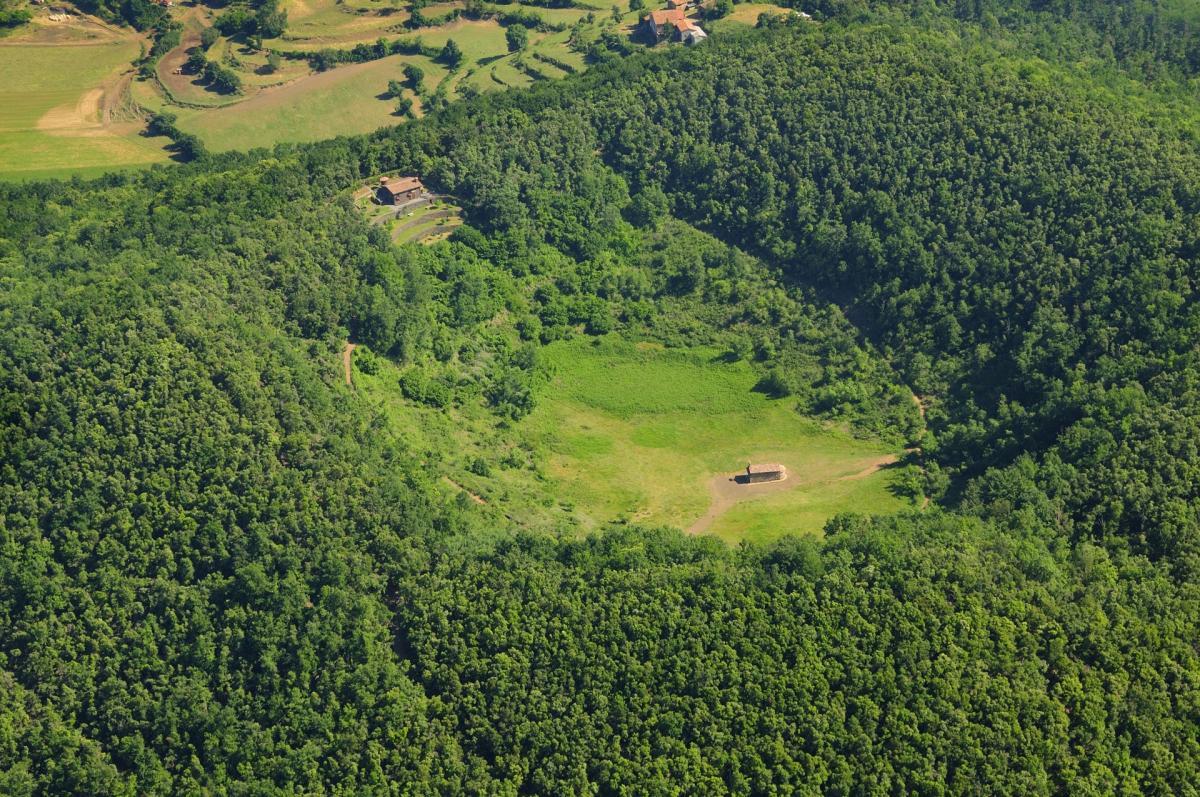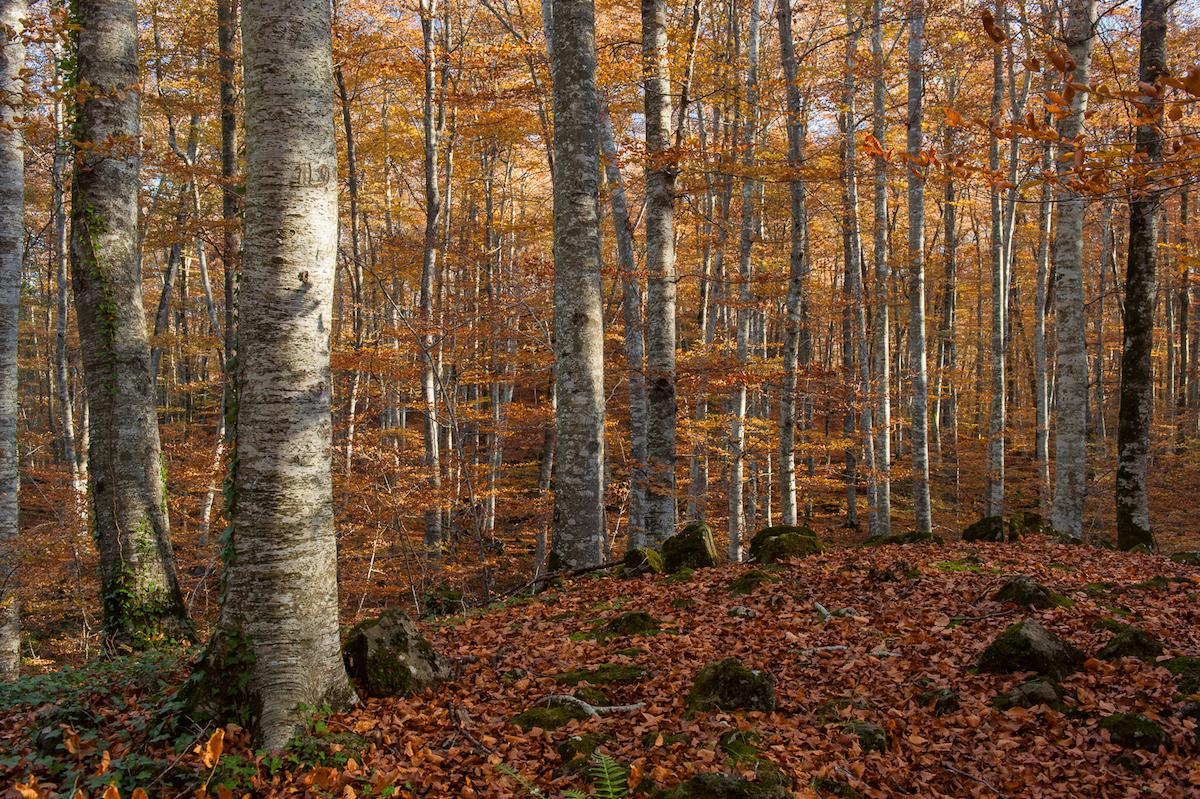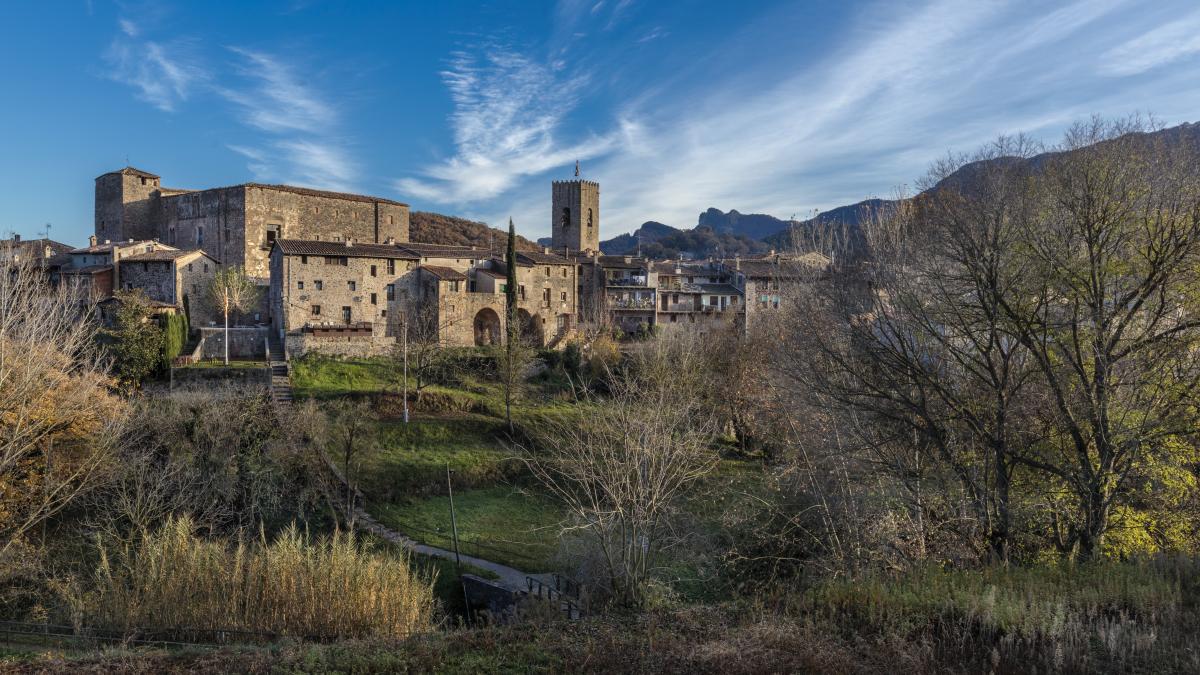It is 8 am. An early start is required if you want to enjoy a surprisingly different perspective of the mountains, the fields, the forests, the sky... and the volcanoes! Lend a hand getting the balloon ready before clambering into the basket. The first sensation of leaving terra firma is thrilling. The balloon rises slowly but surely and in less than a minute, you will be balanced in the air, hundreds of metres above the land below. Shortly afterwards, you will drift over the volcanoes of El Croscat and Santa Margarida (with a small hermitage in the middle of its crater) and see many other large and small volcanic cones, with the Pyrenees away in the distance. Once you get over the initial fright, enjoy your flight while you sip a refreshing glass of cava. This is a dream come true!

As you walk through Fageda d’en Jordà, a ray of sun timidly lights up a corner of this well-known beech wood, one of the main all-year-round attractions of the fascinating Garrotxa County landscape. People say that autumn is the best time to come here and see the brilliant array of golden and reddish hues of the leaves. Springtime, however, has its own particular charm, when the new growth prevents the sunlight from filtering through the branches and creates a truly magic twilight. The beech wood grows on top of a lava flow and is said to be full of fairies and other fantasy creatures. It was a source of inspiration for Joan Maragall, one of the best-loved poets of Catalonia. One way of exploring this unique landscape is by going on a horseback route through the woods.

The last volcanic eruption in Catalonia took place 11,500 years ago in El Croscat, one of the most emblematic volcanoes in the Garrotxa Volcanic Area and the highest in the Iberian Peninsula. A sign-posted itinerary brings you into the heart of the volcano, where many years of quarrying left a wedge-shaped gash measuring 100 metres high by 500 metres wide. El Croscat is just one of the many volcanoes scattered around this protected area of obvious geological interest, with its rich, varied vegetation and landscapes of great natural beauty. After seeing the volcanoes from the air, you may wish to examine some of them more closely. Walk around El Croscat and then go up to Santa Margarida, one of the most popular volcanoes in the area. It takes about half an hour to reach the crater, with a large meadow and the hermitage of Santa Margarida in its centre, a striking image that will remain etched on your memory forever or immortalised by your camera.

The volcanic journey ends in Santa Pau, where the cobbled streets and picturesque squares look as if they were expressly made for a catalogue of charming villages. Take the opportunity to sit down in a restaurant serving the famous “volcanic cuisine” prepared with local products from these humid, mineral-rich lands, such as Santa Pau beans, corn, buckwheat, wild boar, pork, snails, truffles, potatoes, turnips, and chestnuts. Enjoy an exquisite “volcanic” menu, ending your meal with a delicious buckwheat ice cream. Now, that’s something you didn’t expect!

